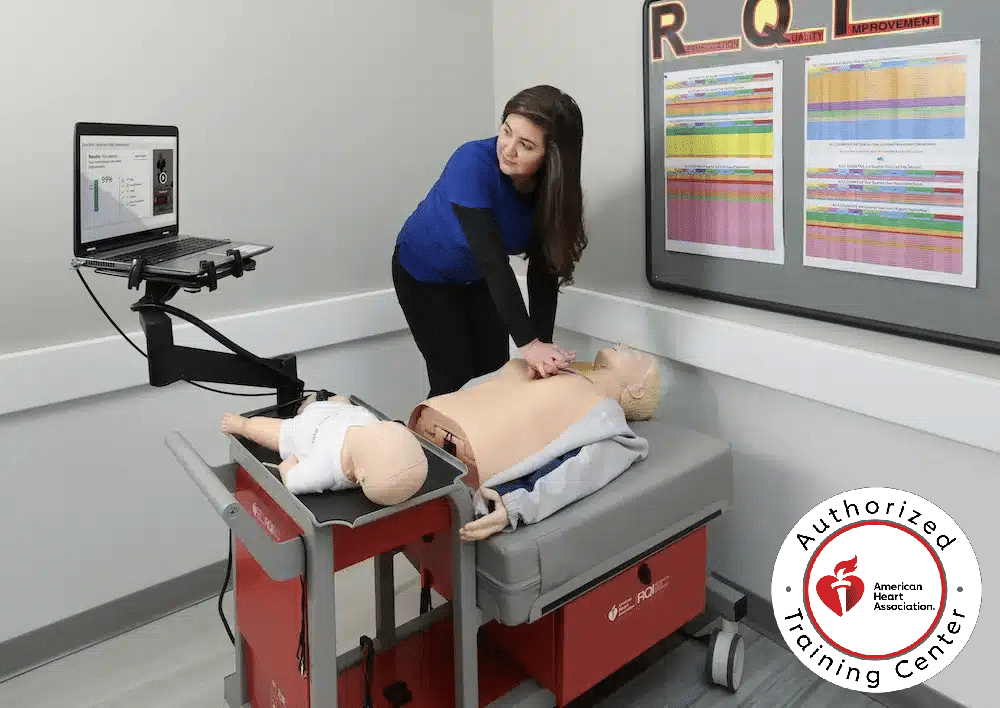CPR, BLS, ACLS, PALS, & First-aid Classes in Elk Grove

Safety Training Seminars
Phone: (916) 252-3052
Office Hours: Daily 8am – 10pm
Fast Registration in Elk Grove or View Other Cities Below
BLS Courses in Elk Grove
ACLS Courses in Elk Grove
PALS Courses in Elk Grove
CPR & First-aid Courses in Elk Grove
NRP Courses in Concord or San Francisco
EMSA Health, Safety, Lead Poisoning (For CA Childcare Providers)
American Heart Association Classes - Over 60 Offices in Northern CA
Store locator is loading from StoreRocket Store Locator App..
What is RQI?
The American Heart Association RQI (Resuscitation Quality Improvement) program is the most popular, modern, and fast way for medical & healthcare professionals in Elk Grove to receive their official American Heart Association BLS, ACLS, and PALS certification cards.
Three Easy Steps- Take the online course at home (a few hours).
- Skills test with VAM (voice assisted manikin).
- Receive the certification card on the day of class.
About Us
Safety Training Seminars (Founded 1989)
Safety Training Seminars is a woman-owned AHA Training Center that provides high quality American Heart Association BLS, ACLS, PALS, CPR & First-aid courses in Elk Grove, CA.
Excellent Customer Service
Safety Training Seminars has a top notch team of customer service reps that are available every day (including weekends) 8am – 10pm.
Classes Daily In Over 60 Cities
For our customer’s convenience, we offer AHA BLS, ACLS, PALS, CPR, & First-aid certification courses every day of the week in Elk Grove and other cities near you.
Certification Card
After the course, students will receive the official AMERICAN HEART ASSOCIATION certification card (valid 2 years).
Low Price Guarantee
Safety Training Seminars offers the lowest prices in Sacramento County, backed by our Low Price Guarantee.